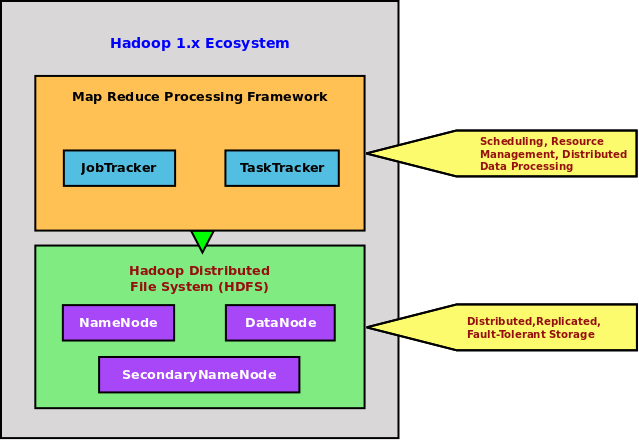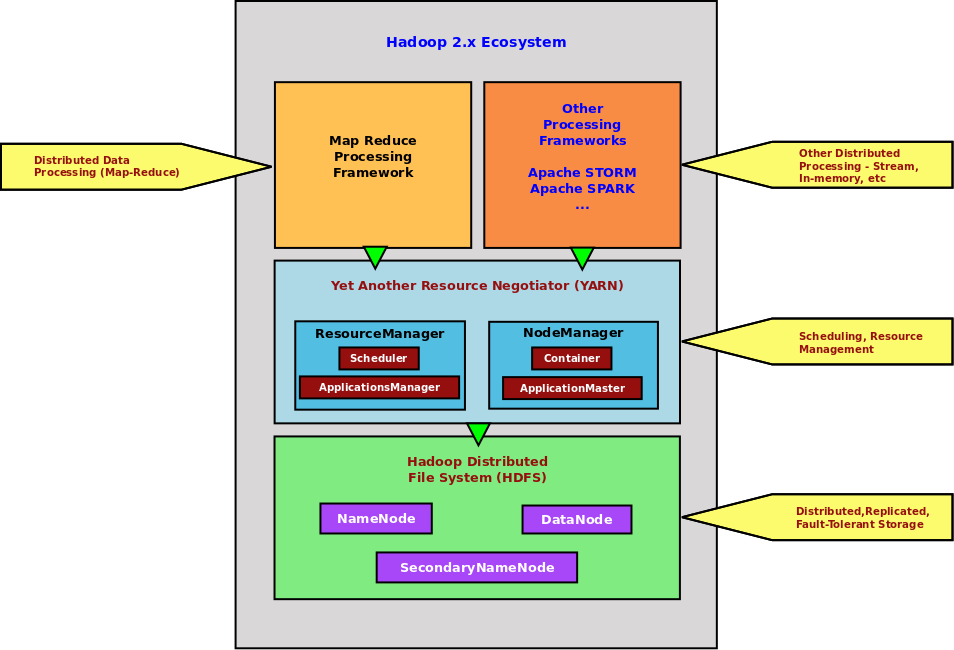| It is the ultimate authority that governs the
entire cluster and manages the assignment of applications to
underlying cluster resources.
There is one active instance of the ResourceManager and it
typically runs on a master node of the cluster.
ResourceManager HA feature allows two separate nodes in the
cluster to run ResourceManagers with one ResourceManager in an
active state and the other is in a passive standby mode.
The ResourceManager consists of two main components - the Scheduler and the ApplicationsManager.
The Scheduler is responsible for scheduling and allocating
resources to the various applications based on the resource
requirements of the applications. The Scheduler performs its
scheduling function based on the abstract notion of a resource Container which incorporates elements such
as cpu, memory, etc. Currently, only memory is supported.
The Scheduler uses a pluggable architecture for the scheduling
policy. The current implementations are the CapacityScheduler
and the FairScheduler. The
CapacityScheduler is the default.
The ApplicationsManager is responsible
for accepting job-submissions from clients and negotiating the
first Container for executing the per-application specific ApplicationMaster. It provides the service
of monitoring and restarting the ApplicationMaster in an event of
failure
|

